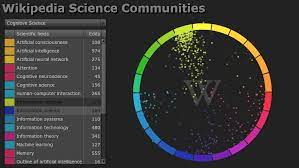In today's rapidly evolving digital landscape, investigative reporting has taken a giant leap forward with the integration of Artificial Intelligence (AI) technology. This groundbreaking fusion of journalism and advanced AI algorithms has paved the way for more efficient, comprehensive, and impactful investigative reporting. In this article, we delve into the realm of investigative reporting with AI content, exploring its capabilities, benefits, and real-world applications.
The Power of Investigative Reporting
Investigative reporting is the bedrock of journalism, unearthing hidden truths, exposing corruption, and holding those in power accountable. It's a meticulous process that requires extensive research, data analysis, and an unyielding commitment to revealing the facts. Traditionally, investigative journalists would spend countless hours sifting through documents, conducting interviews, and connecting dots to unravel a story's deeper layers.
.jpg)
Integrating AI into Investigative Reporting
AI content has revolutionized investigative reporting by automating and augmenting various aspects of the process. Natural Language Processing (NLP) algorithms enable AI systems to sift through vast amounts of text, identifying patterns, anomalies, and connections that might elude human reporters. This accelerates the information-gathering phase significantly, allowing journalists to focus on higher-level analysis.
Unveiling the Steps of Investigative Reporting with AI Content
Step 1: Data Collection and Analysis
AI tools excel at data aggregation from diverse sources. They can analyze financial reports, social media activity, public records, and more, extracting relevant information swiftly. For instance, AI can scan corporate financial statements (hyperlink: Financial Statement Analysis with AI) to uncover potential discrepancies or anomalies that might indicate financial misconduct.
Step 2: Pattern Recognition and Anomaly Detection
Identifying patterns is at the core of investigative reporting. AI algorithms excel in spotting unusual trends or outliers within large datasets, alerting journalists to potential leads. By utilizing AI-powered anomaly detection, journalists can uncover hidden connections that may be indicative of fraudulent activities or unscrupulous behavior (hyperlink: Anomaly Detection Techniques).
Step 3: Sentiment Analysis
Understanding public sentiment is crucial for investigative reporting. AI-driven sentiment analysis can analyze social media posts, comments, and news articles to gauge public opinions and reactions related to a specific topic. This helps journalists contextualize their findings and gauge the potential impact of their investigative work (hyperlink: The Role of Sentiment Analysis in Journalism).
Step 4: Automated Fact-Checking
Ensuring accuracy is paramount in investigative reporting. AI-powered fact-checking tools can swiftly verify claims and statements against vast databases of information, enhancing the credibility of investigative reports (hyperlink: The Future of Fact-Checking Technology).
Step 5: Interactive Data Visualization
AI-driven data visualization tools enable journalists to transform complex information into engaging visuals, making it easier for readers to grasp intricate details. Interactive graphs and charts enhance the storytelling process, allowing audiences to explore the investigative findings on their own (hyperlink: Data Visualization Tools for Journalists).
.jpg)
Conclusion
The integration of AI content into investigative reporting has unlocked unprecedented possibilities for journalists. By harnessing AI's analytical capabilities, investigative reporters can expedite data collection, uncover hidden patterns, and enhance the overall quality and impact of their work. While AI is a powerful ally, it complements rather than replaces the essential role of human journalists. The synergy between human intuition and AI's computational prowess has the potential to reshape the field of investigative reporting, bringing about a new era of transparency, accountability, and truth-seeking in journalism.

.jpg)
.png)
.jpg)
.jpg)
.jpg)
